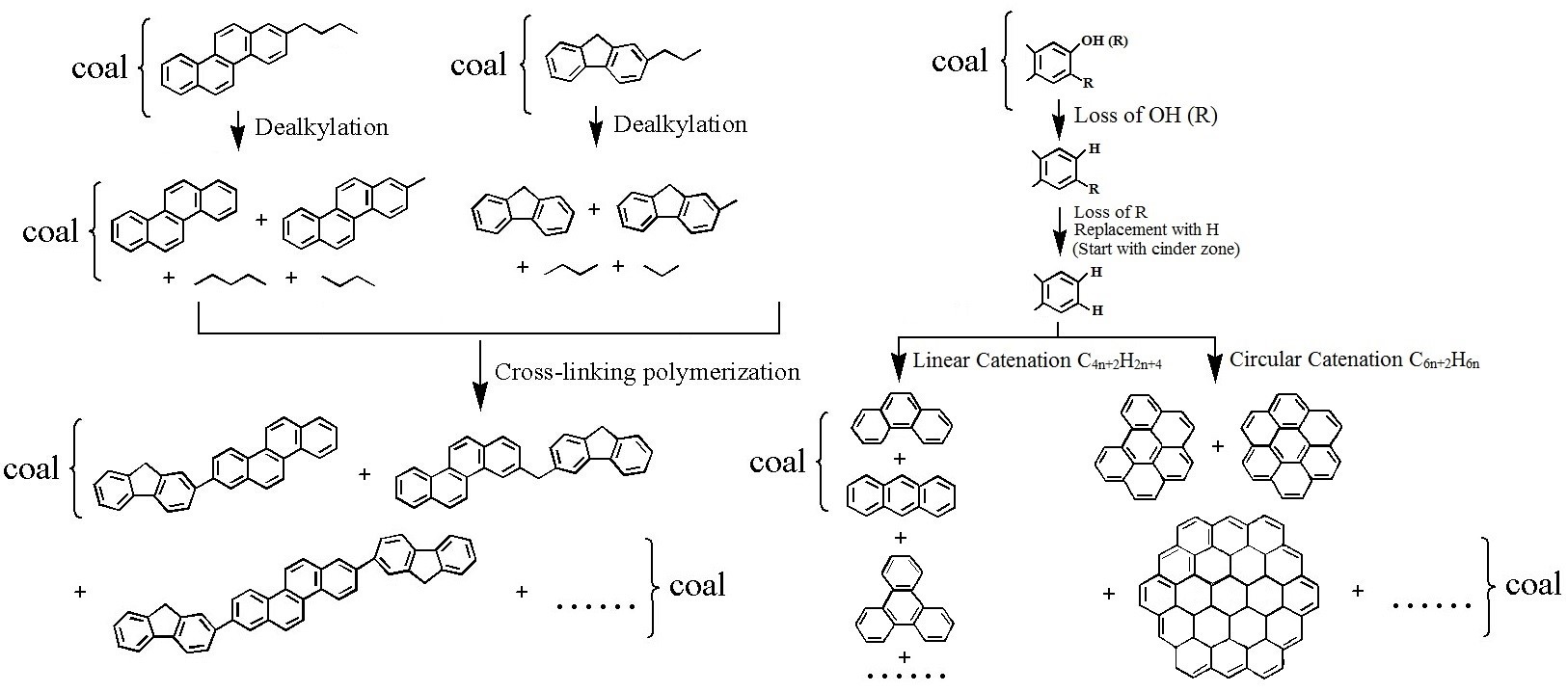Polycyclic aromatic hydrocarbons (PAHs) are ubiquitous global contaminants and are potentially carcinogenic and mutagenic to human beings. The PAHs in coals vary between 1 and 2500 μg/g, and exist as soluble components in three-dimensional network of coal. The combustion and utilization of coals in the industrial processes would release the inherited and newly formed PAHs in coals, which subsequently participate the formation of secondary aerosols and haze particles.
Here, the associate professor Ruoyu SUN published a review paper on the journal <Earth-Science Reviews> as co-corresponding author to address the evolution trajectories of PAHs in coals and the relationship between coal organic structure and PAHs during coal metamorphosis. Multiple factors including coal precursors, depositional environment, wild fires and magmatic activities were discussed for their controls on PAH occurrences in coals.

The relationship between coal organic structure and PAHs during coal metamorphosis
This study was supported by National Key Research and Development Plan (2016YFC0201600)
The title of the review paper: Wang, R*, Sun, R.*, Liu, G*., Yousaf, B., Wu, D., Chen, J., Zhang, H. 2017. A review of the biogeochemical controls on the occurrence and distribution of polycyclic aromatic compounds (PACs) in coals. Earth-Science Reviews 171: 400-418.
Link:http://www.sciencedirect.com/science/article/pii/S0012825217300557